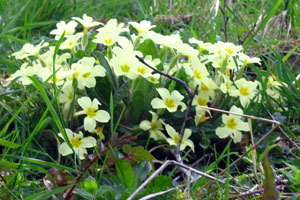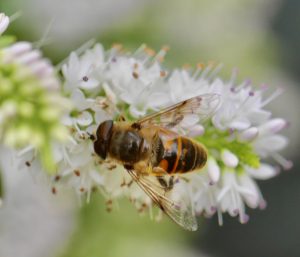Spring is on the move.

In recent decades, signs of Spring have occurred earlier and earlier, indeed the early flowering of crocuses and daffodils in our gardens is one such sign. Now a detailed analysis of such ‘signs’ has been undertaken by using the information held in Nature’s Calendar. This is an enormous database * of records of seasonal changes; it has records of some 400+ species of plants, from trees, to shrubs and herbs. Nature’s Calendar includes records from organisations like the Royal Meteorological Society, plus those of scientists, naturalists and gardeners. Recording when things happen (such as when horse chestnut and ash trees come into leaf, or when the first swifts or bumblebees are seen) is known as phenology. These timings vary from year to year.
Phenology is not a new discipline. One of the first phenologists was Robert Marsham, who recorded ‘indications of spring’ starting back in 1736. He catalogued some 27 different natural events on his family’s estate in Norfolk. In 1875, the Royal Meteorological Society set up a national recorder network.  Nature’s Calendar includes thousands of these historical observations and enables scientists to look for trends and see if they correlate with changes in temperature, rainfall, weather phenomena.
Nature’s Calendar includes thousands of these historical observations and enables scientists to look for trends and see if they correlate with changes in temperature, rainfall, weather phenomena.
The research team from Cambridge University looked at FFDs - first flowering dates and temperature records. They found a difference in flowering dates from the 1750s and the most recent years of almost a month. Professor Ulf Büntgen has said that rising global temperature has brought Spring forward by several weeks.
This raises concerns. For example, if a plant grows and comes into flower earlier in the year what happens to insects  that are dependent upon it? For example, some bees collect from only one species of plant. Or to put it another way, suppose the plant flowers earlier but its pollinating agent (an insect such as a hover fly) is not about, has not emerged from its over-wintering stage? What if there is a ‘late’ frost?
that are dependent upon it? For example, some bees collect from only one species of plant. Or to put it another way, suppose the plant flowers earlier but its pollinating agent (an insect such as a hover fly) is not about, has not emerged from its over-wintering stage? What if there is a ‘late’ frost?
* Nature’s Calendar : The Woodland Trust joined forces with the Centre for Ecology & Hydrology to collate phenology records into Nature’s Calendar; this has some 3.5 million records- some going back to eighteenth century.
Comments are closed for this post.
